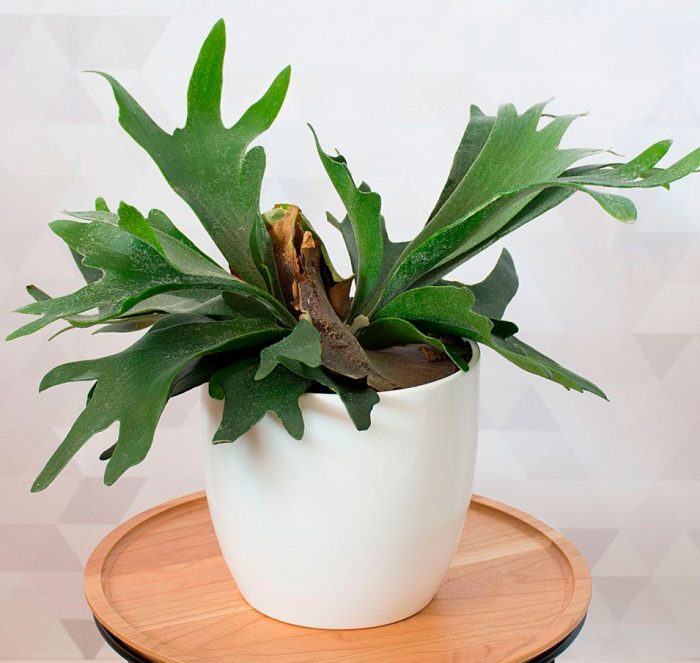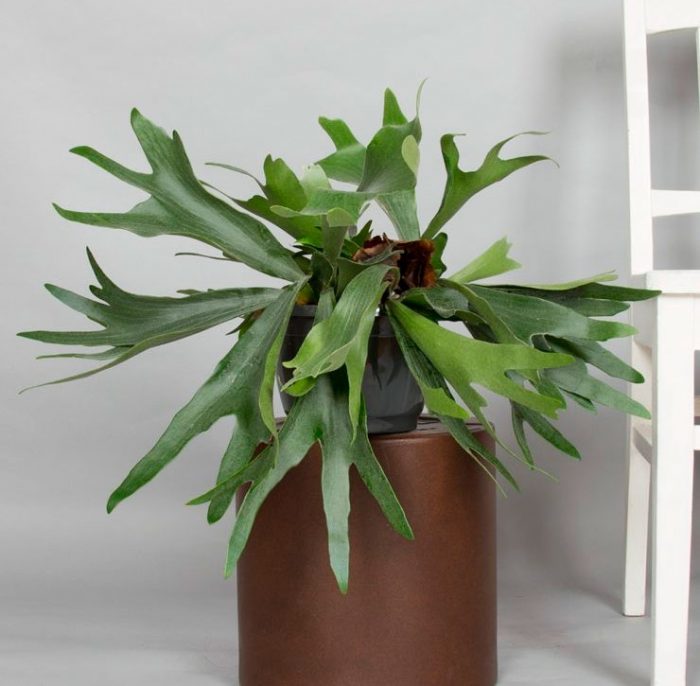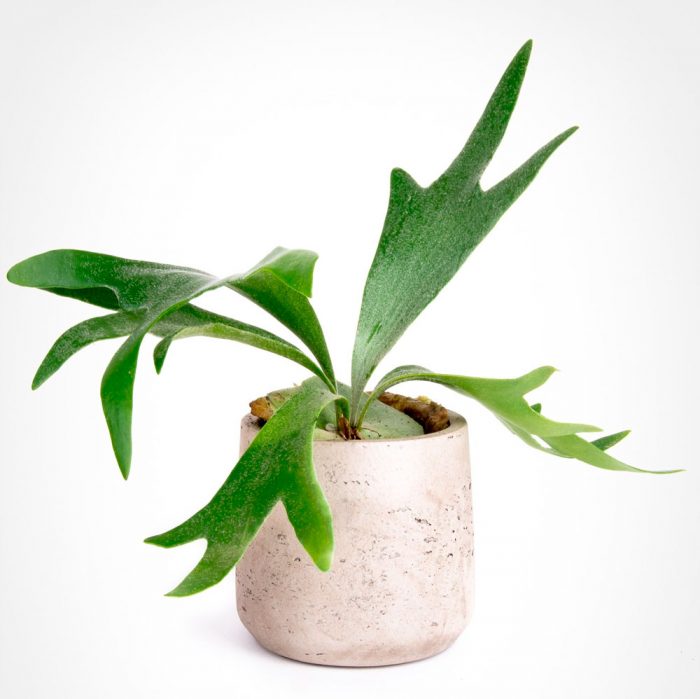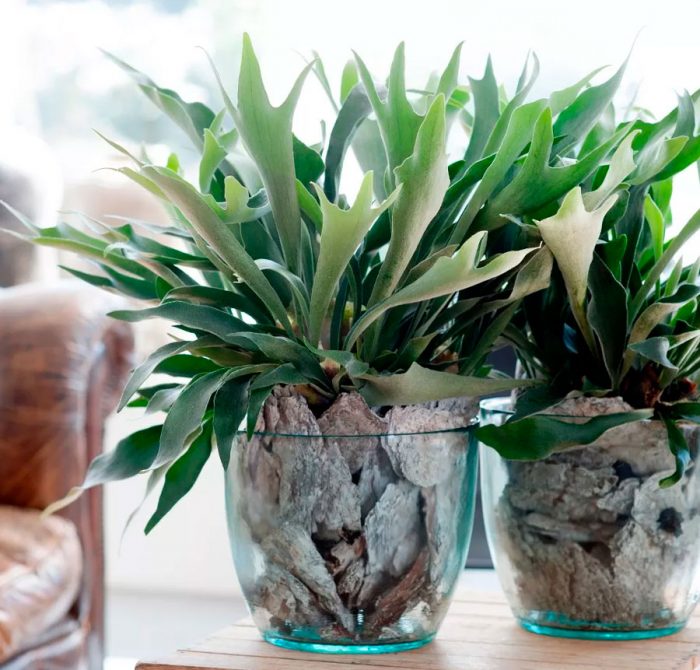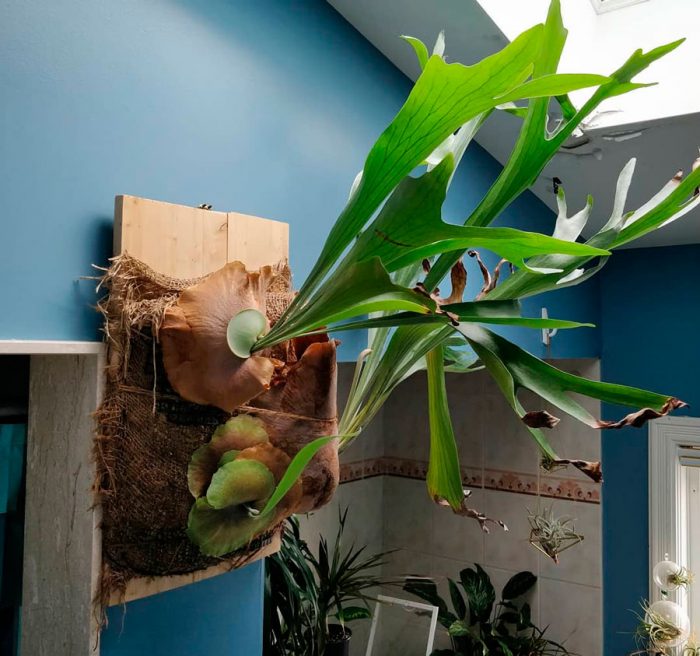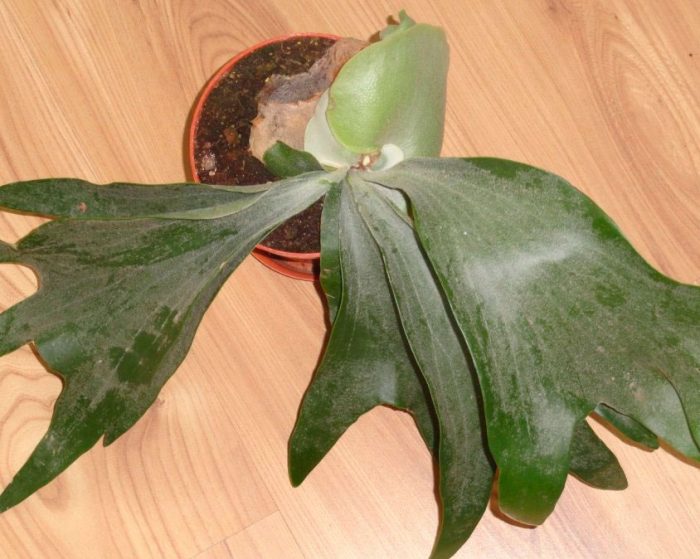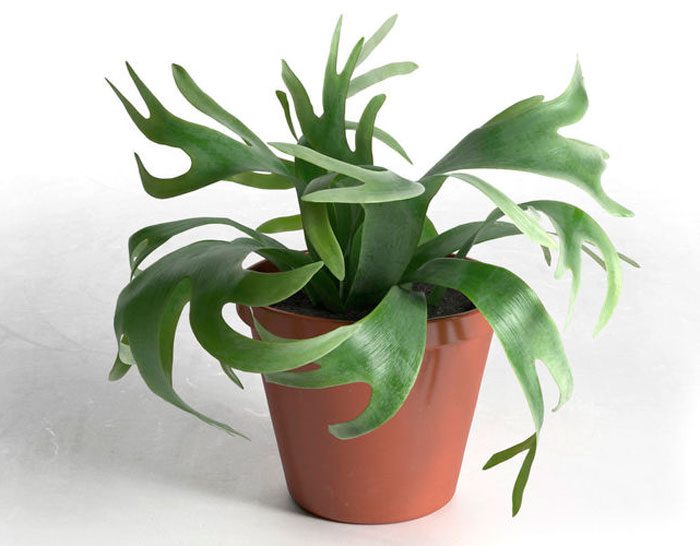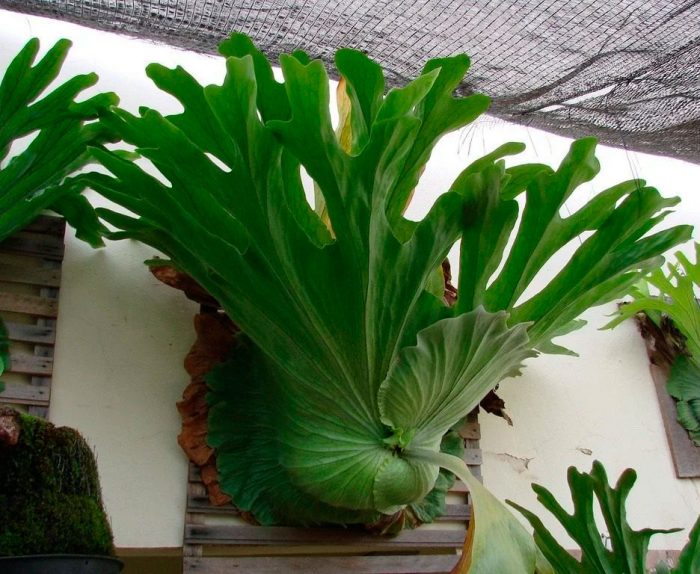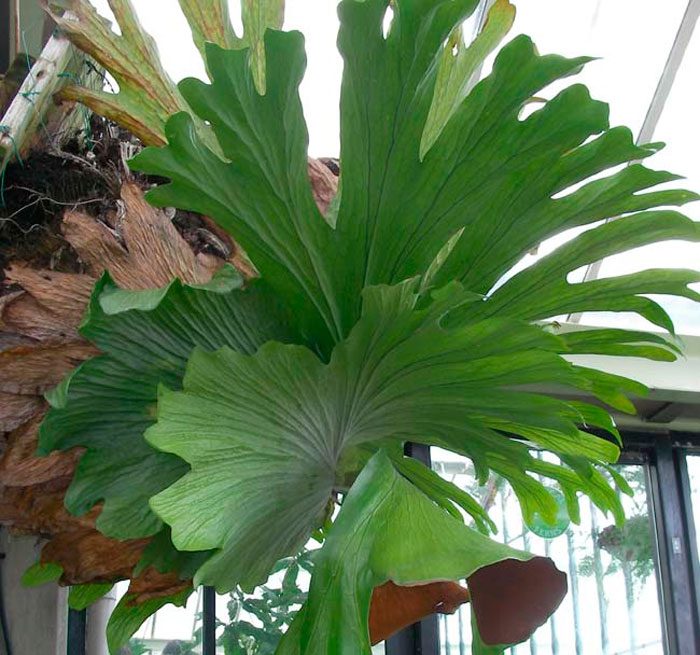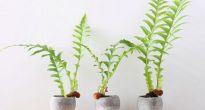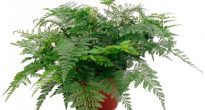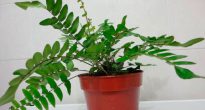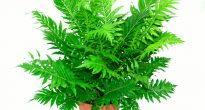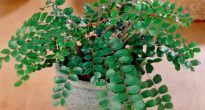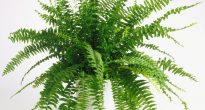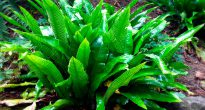Platizerium fern is rarely grown by flower growers, despite the fact that it has a very spectacular and rather unusual appearance, and also differs in undemanding care. People also call this plant "flathorn" or "deer horn", this is due to the shape of the leaf plates.
Content
Features of the platycerium
Platycerium has two types of fronds, namely: spore-bearing and sterile. In the lower part of the bush, sterile fronds grow, remaining green in autumn, and yellowing and drying out in spring and summer. Experts advise not to cut them off in any case, since for the root system these fronds are a very important source of nutrition. Spore-bearing leaf plates begin to fulfill their main task very late, it is necessary that the bush be at least 5 years old. The surface of these wai is covered with white threads, they protect them from bright light, and also help to save moisture.
Platizerium care at home
Illumination
Platizerium will not grow and develop normally in a shaded place, it needs a large amount of bright light, which must be diffused. If it is removed in the shade, then the growth of the bush will stop, and the formation of spores will also stop. However, you should not allow direct sunlight to hit the surface of the foliage, because they can leave burns on the plant. When choosing a suitable place for a fern, you should also pay attention to the width of the wai: plants with wide fronds need less sunlight than those with narrow ones.
Temperature regime
Platitzerium is very resistant to both low and high air temperatures. For example, in winter it is able to withstand a short-term drop in temperature to 0 degrees, and in summer it feels quite comfortable at air temperatures up to 37 degrees. However, if the room is even hotter, then the abundance and frequency of watering will certainly increase.
Air humidity
The plant needs high air humidity: its optimal level is about 50 percent. This will require frequent moistening of the bush from a spray bottle.However, experts recommend spraying water next to the bush, and it will be better if its droplets do not fall on the platycerium.
Watering
In most flower growers, this plant dies due to improper watering, namely, due to the fact that liquid regularly stagnates in the substrate. To avoid this, between waterings, you need to let the substrate dry in the container and only then moisten it again. However, if the fern feels a lack of water, this will also greatly affect its growth and development.
The optimal irrigation regime in the warm season is 2 times every 7 days. In autumn and winter, the number and abundance of watering should be reduced. If you need to leave for a long time, and there is no one to water the Platycerium, then take a container and fill it with moistened sphagnum moss, and then place a flower pot with a plant in it. You cannot wipe with a damp cloth or wash the frond, because this can greatly harm the hairs that retain moisture. If you need to remove dust from foliage, just sweep it with a brush.
Substrate and transplant
For the cultivation of platycerium, a weakly acidic soil mixture is used. The approximate composition of the substrate: sphagnum, peat and leafy soil with the addition of a small amount of pine bark. Make sure to make a good drainage layer at the bottom of the pot.
The plant does not have a very large root system, so it does not need frequent transplants. On average, the bush is transplanted once every 2 years. Often, growers grow such a fern on a piece of wood without using a pot, attaching moss to the tree and driving nails into the place where the flower will be. The bush is placed on sphagnum and tied to the carnations with fishing line. Make sure that the moss does not dry out, and for this it is systematically immersed in a container of water. When the fern grows strongly, another plank is attached to the piece of wood.
Reproduction methods
Offspring
Most often, Platycerium is propagated by grown offspring, which must have at least three leaf plates. The separated offspring must have a few roots and a bud; they are planted in a pot with a loose substrate.
Controversy
The spores of such a fern mature for a very long time, which greatly complicates their reproduction. Collect spores from bushes that are over 5 years old and sow them in a bowl filled with a moistened sterilized mixture of peat moss and peat. Cover the bowl with foil and put it on the windowsill, while protecting the crops from direct sunlight. Ventilate and moisturize the substrate regularly from the sprayer. The first seedlings will appear after 2–6 weeks, until they grow up and get stronger, the cover is not removed from the container.
Disease and pests
Pests
Most often, scale insects settle on the Platycerium, which can be found on the seamy, and sometimes on the front surface of the foliage. Spider mites and aphids can also harm the plant.
Diseases
The plant is sometimes affected by powdery mildew. Due to regular waterlogging, the bush can be affected by a fungal disease, due to which dark spots appear on the leaf plates. If brownish spots are formed on them, then these are sunburn. Drooping foliage may indicate that the plant needs urgent watering, and faded fronds may indicate a lack of nutrients. If the bush grows very slowly, it means that it is cramped in the pot.
Types of platycerium
The platycerium fern has more than 15 species, which are native to India and Africa, or rather, their areas with a warm and mild climate. Below will be described those species that are most popular in culture.
Platycerium bifurcatum (Platycerium bifurcatum)
This type is the most popular among flower growers. His homeland is Australia. The shape of sterile leaf plates is round, and in diameter they reach about 10 centimeters.The length of spore-bearing wai sometimes reaches more than half a meter. They are divided into lobes, which are about 40 millimeters wide.
Platycerium grande
This species also comes from Australia. Large sterile leaf plates are about 0.6 m wide, and they do not dry out for a long time. Such leaves are cut up to half into long segments.
Platycerium superbum
This species is very similar to Platycerium large, so they are often confused. These species differ from each other in that the superboom has 1 area with spores, and the large one has 2.
Platycerium angolense
This species differs from the others in that its spore-bearing fronds are not palmate, but have orange pubescence on their surface.


Watch this video on YouTube

